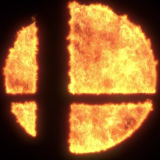The Quickening: The dark side of Rareware · 3:00am Sep 22nd, 2017
Author's note: Before anything, I'd like to say that I'm glad to be alive, considering that I survived two earthquakes in the past couple of weeks. I deeply thank all the people involved in helping the victims.

For the people who grew up i the 90's (like your server), we all know this logo and its importance in the videogame history. But the sad truth is that this company made achievements based on pain and, although it created great things, in reality it wasn't as good as we thought it really was. Everything has an untold story and Rare isn't deprived from it. In the fifteen anniversary of the departure of the company from Nintendo, it's time to talk about the dark side of Rareware.
Since the founding of Ashby Computers and Graphics Limited, the studio has been surrounded by secrecy regarding projects in which it works and, above all, how it works. This allowed them to hide a constant crunch with each of their projects. Crunching is commonplace in the video game industry. For various problems throughout development, studies are forced to work more hours than usual and even on weekends to reach the stipulated launch date with the finished product. However, there are several studies that, by poorly approaching stages of development, work in a constant crunch. And Rare is one of them.
Already at the launch of Jetpac in 1983, both Tim and Chris Stamper and their workers, who demanded the same, had 18 hours a day, seven days a week for 52 weeks a year. They just rested between 2:00 a.m. and 8:00 a.m. when following a philosophy that a half-time employee made half-hearted games. Both brothers could do this in order to create whatever they wanted, but their workers...
The first quit of the study because of the crunch came soon, when Rare acquired the company Zippo Games, of the Pickford brothers, that left the company a few years later by the hard working conditions and the constant cancellations of projects.
In 1997, after the launch of Diddy Kong Racing and a few months before the launch of Banjo-Kazooie for Nintendo 64, the crunch inside the company was publicly known. The long hours of work led a large group of developers to leave the company and make a protest against the Stamper brothers. These employees created another studio, Eighth Wonder, that were going to work for Sony but didn't get to throw a single game.
The exit of the director of Goldeneye 007 also was caused by the long working days, that did that Martin Hollis couldn't stand more. However, the relationship between employee and company did not end badly, as Rare made a recommendation for Hollis to end up working for Nintendo of America. As Hollis left, two veterans of the development of that title also went away. David Doak and Steve Ellis went to Free Radical Desing, where they created Time Splitter. After the launch of Perfect Dark, another good handful of workers left the company.
In one of the documentaries included in Rare Replay, several workers talk about how it is to work in the company. Gregg Mayles, in a halo of illusion, says the following words: "Break the spine. That was something everyone picked up from Tim and Chris [Stamper]. They were convinced that pushing hard and putting things in games that the players did not expect was what could make their titles stand out. "
"Even if that means you have to spend most of your life at work [...]," says composer Eveline Novakovic. "[...] that is what you were trying to achieve. You were trying to launch the next Rare game."
"I'm a little obsessed. I put a lot of hours into this work," explains artist Ryan Stevenson. "I think that shows up in the product. If you love the project and are really passionate about it, you will put something of your soul into it. And I think that sometimes has a cost, but it's always a cost that's worth it."
To this I have to add that, in reality, Goldeneye and Banjo-Kazooie were the peak of their creativity. With the exceptions of Perfect Dark and Conker's Bad Fur Day, the rest of the titles didn't leave a big impression because almost all of them used the same elements: platformers with collectibles and occasionally with first person shooter sections. The team copied and pasted everything that worked on Goldeneye and Banjo-Kazooie, no matter if it made sense in the context of the game (the one that suffered the most was Donkey Kong 64).
If there's anything I can learn about this is that: first, despite all the technological advances, we cannot pressure the rest to do this. I could work 24 hours per day to do a job, but that doesn't mean the rest can follow my steps. This is almost a form of slaver labor. And second, doing the same things over and over again with no relaxing times can end up being harmful and detrimental over time. We need our own privacy to get inspiration and ideas easy to flow. Don't get me wrong, I love Rare's games, but it's time to open the eyes.



I'm really glad your doing ok.
Let me see if I can sum this up in five words-
Banjo Kazooie: Nuts and Bolts
4675051
Thank you, that means a lot.